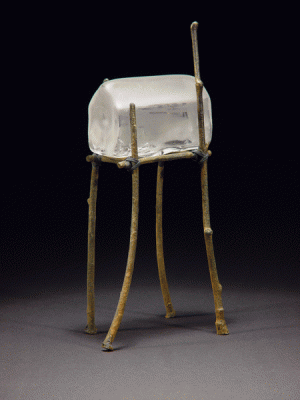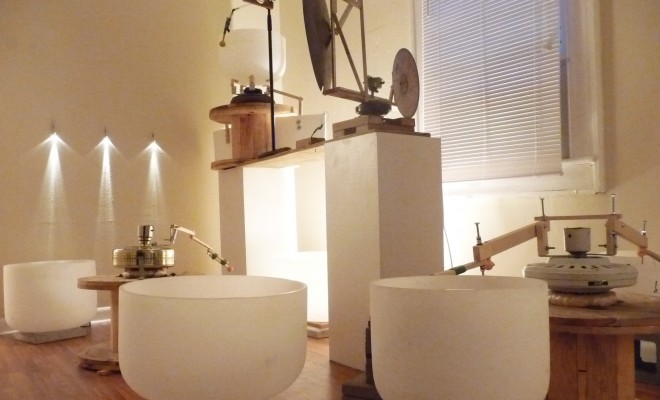Review: “The Glass Menagerie”

Carlos Zervigon, House Menagerie (one part in a series of objects), 2011. Glass, metal. Courtesy the artist and Trouser House, New Orleans.
“The Glass Menagerie”
Trouser House
4105 St. Claude Avenue
March 12—May 30, 2011
For years I would pass by museum exhibits of blown or cast glass in silent judgment. I regarded the medium as tacky; from millefiori paperweights to the art of Dale Chihuly, it all seemed frilly at best and ridiculously bourgeois at worst. While I have great respect for the processes of glassblowing, casting, and sandblasting, the final product never merited a second look in my opinion. I was wrong. Opening in tandem with the Tennessee Williams Literary Festival’s 25th year and the author’s 100th birthday, “The Glass Menagerie,” a group exhibition at Trouser House featuring work in glass by eight local artists, defied my judgment of the medium.
Carlos Zervigon’s House Menagerie, 2011, suggests the fragile relationship between resident and home in New Orleans. Alternately smooth and rough-hewn, each object in the collection of diaphanous glass houses seems more delicate than the next: one house stands precariously on wire stilts; another holds the ashes of the artist’s grandmother; a small globe of crystalline glass sits atop a bullet. The artist has called this series an investigation of “the universal aspect of the human condition that seeks (with varying levels of success) to protect ourselves from the ravages of nature.” Begun in 2004, Zervigon’s exploration of this topic became more poignant the following year in the wake of Katrina’s destruction. The piece also raises a complex debate between function and non-function in the medium. A petite house appears to float in a cup filled to the brim with water (also made of glass). By creating a work of common functional form and depriving it of functionality, Zervigon pays homage to the role glass plays in our everyday lives, while considering how materials are elevated by an art context.
Josh Cohen’s sound installation Sleep Soundly, 2011, uses ceiling fan motors, quartz crystal bowls, duct tape, Styrofoam, and rubber doll feet to create a complex instrument that recalls a Rube Goldberg machine. Four mechanisms spin slowly around, soft mallets gently ringing large quartz crystal bowls, drum cymbals, and a copper meditation bowl. The work fills the whole space with sound. On opening night, I could barely make it through the room due to the hypnotized, unmoving crowd. Cohen, also a musician, has a knack for experimenting with the effects of sound. He has said: “I measure the pitch of each bowl with a special strobe tuner accurate within one cent. Different brain wave states can be entrained by these controlled sound relationships, including lucid and sleep-like states during wakefulness.” The effect is mesmerizing.

Josh Cohen, Sleep Soundly, 2011. Quartz crystal bowls, mallets, ceiling fan heads, wooden spools, wood, screws, bolts, cymbals. Courtesy the artist and Trouser House, New Orleans.
Camp, as Susan Sontag brilliantly wrote, is “a vision of the world in terms of style—but a particular kind of style. It is the love of the exaggerated, the ‘off,’ of things-being-what-they-are-not.” Much of the aesthetic I love in New Orleans falls into the category of camp: our beaded trees, our cracked gardens, our exaggerated taste in…well, everything. So how is it that in a city as campy as New Orleans, the medium of glass quietly stood up and proclaimed its ability to be this thoughtful and suggestive? Perhaps it is that our city’s natural proclivity to exaggeration and frivolousness is the perfect aesthetic temperature to incubate an incredibly high-quality glass arts scene that thrives on simplicity. All I know is that I will no longer pass by glass exhibits of New Orleans artists. In fact, I offer my apologies for past judgment.



